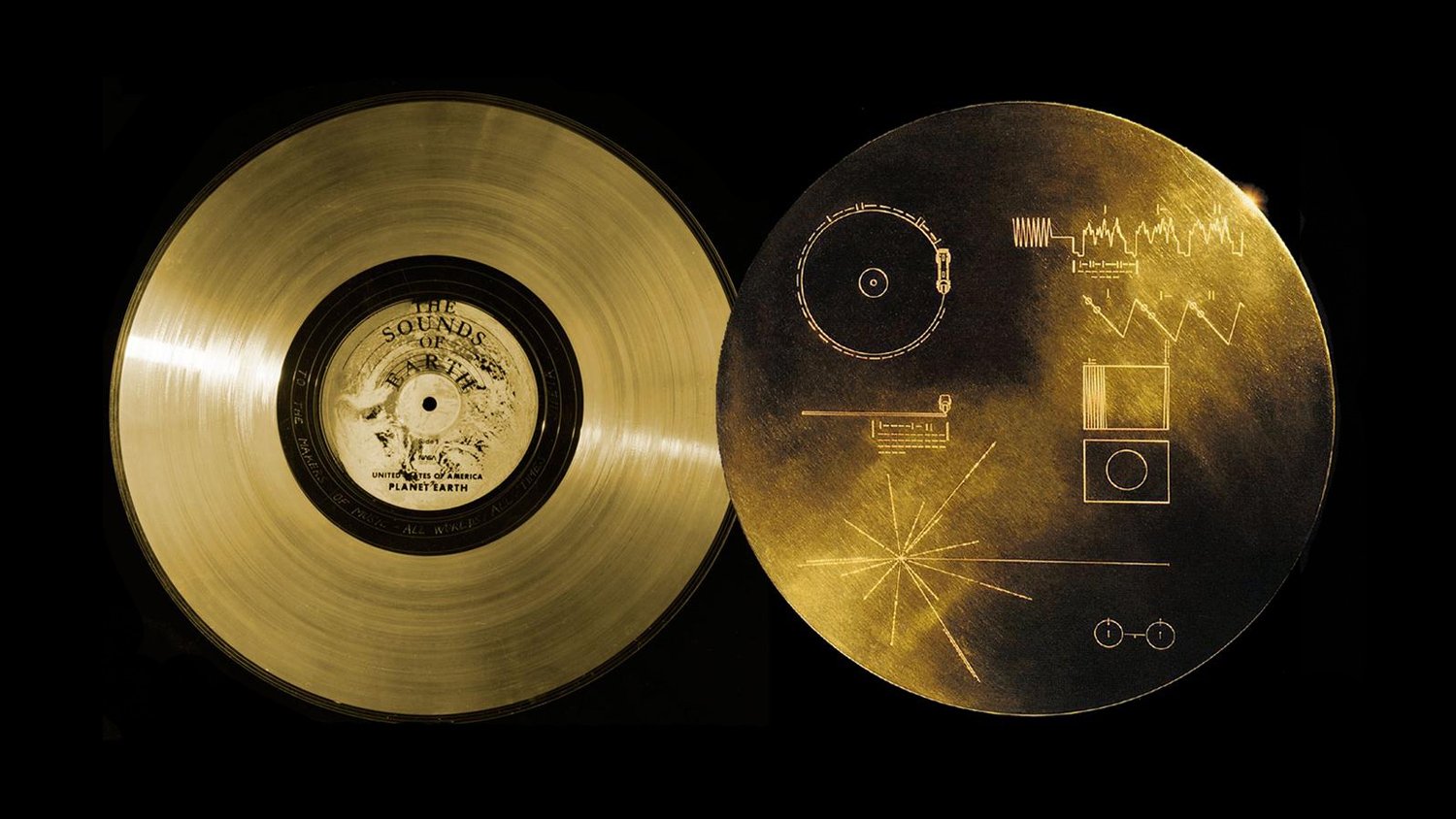Singing with the Whales
A Challenge for Humanity from the Voices of the Deep
Photos by NASA
Right now, as you read (or skim) these words on some form of connected screen, the calls of humpback whales are moving through the oceans and hurtling through interstellar space. Meanwhile, ships, boats, jet skis and airplanes tear above the surface, while submarines, drilling rigs and sonar technologies probe the blue depths and sound our presence to species in the ancient, interconnected, life-giving ecosystem upon which our survival depends.
In 1977, NASA mounted twin records of a time capsule containing the sounds and images of humanity to the Voyager I and II spacecraft and blasted them off into the solar system. The capsule’s curators, a collaborative team chaired by Carl Sagan, thought the eerie calls of marine mammals — along with human greetings in 61 languages, music, chanting, and other sounds of our home planet — might convey to extraterrestrials something telling and meaningful about intelligent life on Earth.
The songs of humpback whales recorded in 1970 by Dr. Roger Payne, a Parley collaborator and the founder of Ocean Alliance, were included. Like a “bottle cast into a cosmic ocean,” as Sagan once put it, the album is now traveling through the vast unknown of interstellar space.
Thanks to NASA, you can track the status of the Voyager mission here.
Photo by Scott Wilson
Similar to the Golden Record, the story behind the discovery of whale communication is a testament to the power and importance of creative collaboration.
In 1971, six years before NASA etched his recording into a record and rocketed it into space, Dr. Roger Payne co-published a paper hypothesizing that whales communicate through song. Military research first recorded the alien calls, and then a musician’s ear (Katy Payne’s) led the pioneering whale research team to identify repeating patterns among the echolocating clicks and low frequency moans. The discovery played a big role in shifting public opinion on commercial whaling, and provided a call to arms for the “Save the Whales” movement.
Today, nearly 50 years later, we know (or theorize) that humpback whales don’t just sing, they collectively compose in organized community symphonies, or pods. We know their songs evolve over time, and can bridge vast distances of geography and emotion. We know sperm whales sound individually distinct codas, which we speculate are like unique names. We know the songs of blue whales are changing, their voices dropping to lower frequencies, most likely in order to be heard. We have even learned to decode and translate whale songs into sheet music, a feat researchers believe may help us make sense of alien languages. Despite our deepening scientific knowledge of the singing ocean, what exactly the whales are singing about and why remains a mystery. We may never know all the answers, but that’s a lesson in and of itself. Right?
Photo by Christian Miller
Parley collaborator Dr. Christopher Clark, Ph.D., is an acoustic expert and one of the world’s best listeners. He assisted the Paynes with their groundbreaking research of whale songs in the 1970s and now heads up the Bioacoustics Research Program at the Cornell Lab of Ornithology. According to Clark, with the right equipment and under the right conditions, you can hear a whale singing off the coast of Ireland from the waters surrounding Virginia. The thought is both enchanting and alarming. How we respond to it will determine the state of the oceans and the fate of its engineering, ecosystem-regulating species.
As ever, there is a need for more scientific research to inform and guide the right questions. But we know enough already to understand our actions need to change — we need to change. Our continued survival on this planet demands that we do. Rachel Carson famously penned in The Sense of Wonder, “it is not half so important to know as to feel.”
“If I were to go to MoMA, or look at Monet’s water lilies, I want to stand as far back from the artwork as possible. I want to just sit there and let it overtake me and overwhelm me. When a blue whale is singing or a humpback is singing, I simply want to experience it. That’s the magnificence to me... To sing a song is the manifestation of the soul of life.”
Dr. Christopher Clark
THE CHALLENGE: Make Music With the Whales
In collaboration with the whale experts and scientists of Ocean Alliance, Parley is harnessing advanced technology and drones to collect big data on ocean health, which in turn can boost conservation efforts. With a fleet of modified drones, Parley SnotBot® uses non-invasive research techniques to gather biological data (and majestic photos) from individual whales and pods around the world, without disturbing them in their environment. We also deploy listening instruments like the Earbot™ drone and traditional hydrophones to collect important acoustic information from the blue universe below.
Dr. Iain Kerr, Parley Chief Scientist and CEO of Ocean Alliance, has been piloting new technology to record the songs of whales, as well as interfering noise pollution.On a recent expedition to Gabon, Africa, the team recorded the calls of humpback whales. Now, Parley is inviting all audio wizards to download a Parley SnotBot® recording and pay tribute to its wonder by creating your own track. Use your talents to raise awareness for the ecosystem and species that make life possible on this blue planet. We’ll use these tracks in projects that help protect whales and the oceans – and maybe one day even beam them into space.
Catch up on the Parley SnotBot diaries 🐋
Gabon | Alaska | Sea of Cortez
Header photo by Scott Wilson. Earbot™ and Snotbot® are registered trademarks of Ocean Alliance.
















